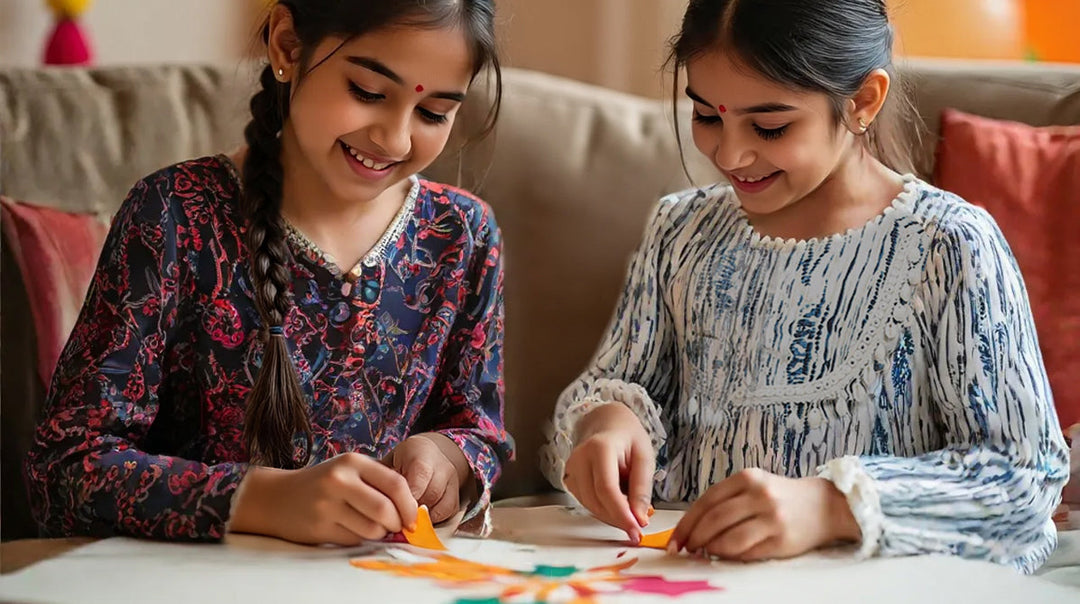A Guide to Reducing Screen Time for Kids: How to Prevent Harm
Children having easy access to electronic devices and screens is a relatively recent development in history. Modern life is enriched by technology in countless ways, and screens have undoubtedly made a positive impact on our lives. However, excessive screen time is detrimental to people of all age groups.
Children are especially vulnerable to the bad effects of screen time. While electronic devices can be a window to the world and provide a wealth of information or entertainment, they must be time-restricted in order to protect children from their harmful effects.
Why is Excessive Screen Time Bad for Children?
Young children learn by observing the world around them. When children spend excessive time looking at a screen, they do not see the world around them and thus this inhibits their overall development as they do not learn as much. This affects language skills, cognition as well as social interaction. Children are also sensory- they learn by touch or texture. A screen will never teach children in the same way that interacting with their environment directly can. Even educational videos or games cannot supplant the importance of outdoor or direct activities for young kids’ development.
The most concerning effect is on attention span. Children who have access to a stream of running content have low patience and this leads to attention deficits, which impacts their reading skills, educational attainment and other learning milestones. Screens are designed to be addictive as algorithms feed a user’s personal preferences. The only way to curb these harmful effects is to remove the screen or limit it.
Alternatives To Screen Time
Screens may be harmful, but they are surely convenient. It can be tempting to hand a bored child who is throwing a tantrum a screen as it can quiet them as well as entertain them. So the first question after reducing screen time is- what can parents replace it with? These listed activities may help:
1. Outdoor Play:
Outdoor play is essential for physical development, gross motor skills, hand-eye coordination and spatial awareness. Exposing children to the outdoor world is important as it helps them make sense of the world, be mindful of the present, and be connected to nature or the real world. Hence, children should be regularly taken outdoors.
2. Indoor Games:
Some of us may live in areas where the outdoors are restricted due to urban planning. Sometimes it may be raining or it could be too cold. Indoor play is easily accessible and can be equally challenging and mentally as well as physically stimulating. Kids can play indoor sports, dance, play board games and more within the confines of the home itself, which is a great alternative to screen time.
3. Household Chores and Errands:
In the past, children often accompanied or helped the family in chores and errands. Taking your children to the grocery store is one example of this. Children should be made aware of and exposed to the realities of adulthood. You can take them with you when you do errands and even turn them into a game where they help you in numerous ways.
4. Hobbies:
Children should have holistic personalities. Each child is different and it will be helpful to figure out what hobby is best for your child. Reading, sports, musical instruments and art are some examples. The point of a hobby is to have fun rather than to be the best at something. While children should strive to be better, the hobby should ultimately be about relaxing and getting away from the screen.
How Much Screen Time Should Children Have?
Screen time is not completely bad. In some ways, it is necessary for children to use electronic devices. Technology is the future and using devices will be important in future careers, higher education and more. It is not about banning screens but rather about introducing them at the right time and using them appropriately. This ensures that children are technologically equipped and tech-literate without being harmed by it. The point is to maximize the benefits by emphasizing how to use screens properly.
Each child is different. Ideally, children under a certain age should not have unsupervised access to screens. Perhaps an hour of screen time on weekdays and a few hours on the weekend is ideal. Make screen time into a social or educational activity- wherein you can watch videos or cartoons with your kids. The content can be educational or entertaining. Also, children should not have access to social media where they can endlessly scroll for hours, as it will make them addicted to the screen.
How to Reduce Screen Time: Actionable Tips for Parents
As a parent, it is important for you to be strict with screen time to protect your child. After determining what an appropriate amount of screen time for your child is, you need to create rules and boundaries as well as enforce them properly. Making these guidelines non-negotiable while allowing alternative ways for your children to spend time is important. Your children will learn to trust and respect you if you explain the rationale behind the rules you enforce. Some tips include:
1. Set Screen Limits and Parental Controls:
Many devices offer a simple way to set screen limits and parental controls. You can use third-party apps which control the content your child has access to. You should set proper expectations with your child and closely monitor what they are watching or reading online to ensure it is age-appropriate or child-friendly. Creating goals and being intentional by utilizing these in-built features will require some research, but it is worth it.
2. Be Realistic:
It is important to be kind to yourself and your children. It is not about being perfect, but about being consistent. Sometimes you may exceed the limits or sometimes children may want to watch their screens for an extra hour. It’s all about balance. Attainable and realistic goals make life simple, so you should try looking at the overall picture and make realistic changes that work for your family or kids.
3. Spend Time With Your Kids:
The reason kids resort to screen time is because they are bored and need leisure. Spending time with your kids, listening to them talk about their day or interests, sharing your own thoughts, playing games and more makes them feel loved. They will instinctively come to you when bored and not use their screens. You can involve children in household chores like cooking or grocery shopping or watch a movie with them.
4. Go Outdoors:
Taking children outdoors gets them away from the screen. Playing sports or simple outdoor games is great. You can also organize a simple picnic or spend time in nature. You should encourage your child to play outside with their friends as much as possible, if not every day. The importance of outdoor play cannot be understated- it is truly a timeless activity that needs to be cherished.
5. Enroll Your Child in Classes:
Hobbies can be inculcated in classes. Asking your child what they are interested in and then enrolling them in different classes is a great idea. They can join short workshops, art or drawing classes, sports classes, musical instrument classes, drama classes and more. Extracurriculars enrich your child’s life, shape their personality, boost their confidence and get them away from screens!
6. Set An Example:
Adults, including parents, are often guilty of too much screen time themselves. Children learn by observing what their role models are doing. As a child’s parent, you should aim to not be hypocritical and limit your own screen time. This will not only help your own mental health but free up time so you can spend time with your children. We should practice what we preach.
In conclusion, balancing screen time is crucial for children's development. By setting clear limits and providing engaging alternatives, parents can ensure that technology benefits rather than hinders their child's growth. Encouraging a mix of activities and leading by example helps foster a healthier and more balanced lifestyle.
As we focus on enhancing children's well-being beyond the screen, consider how their clothing can contribute to a healthier, more active lifestyle. Spunkies will help you there. Our kids’ clothing, crafted entirely in-house from organic materials, blends style with comfort. We carefully manage every step of the process—from knitting and dyeing to printing and stitching. Made from sustainable, breathable fabrics, our apparel is perfect for all of your child's adventures. Explore Spunkies to dress your child in imaginative, comfortable clothing!





